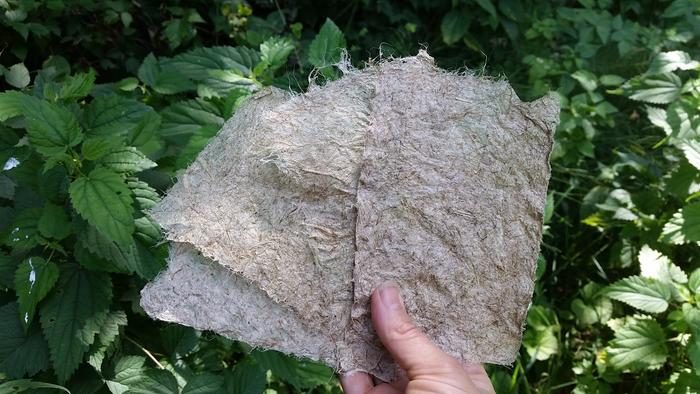
 7
7











 2
2











 2
2




Living in Anjou , France,
For the many not for the few
http://www.permies.com/t/80/31583/projects/Permie-Pennies-France#330873
 3
3




David Livingston wrote:Could some of the waste from your other projects dealing with making cloth be incorporated in making paper ?
David







 2
2











 4
4




"We're all just walking each other home." -Ram Dass
"Be a lamp, or a lifeboat, or a ladder."-Rumi
"It's all one song!" -Neil Young
 1
1




 3
3




A human being should be able to change a diaper, plan an invasion, butcher a hog, conn a ship, design a building, write a sonnet, balance accounts, build a wall, set a bone, comfort the dying, take orders, give orders, cooperate, act alone, solve equations, analyze a new problem, pitch manure, program a computer, cook a tasty meal, fight efficiently, die gallantly. Specialization is for insects.
-Robert A. Heinlein
 1
1




"We're all just walking each other home." -Ram Dass
"Be a lamp, or a lifeboat, or a ladder."-Rumi
"It's all one song!" -Neil Young
 11
11








 5
5




Sometimes a map of all the trails that don’t lead to your destination is as useful as finding the one that does.
 1
1




 2
2




 4
4




leila hamaya wrote:
when i worked at the paper farm as we called it (also called several other names including - Evanescent Press) there was a large beater, and yes you must boil the fiber, for quite a long time. like longer than a day! there were so many cool things there, old school letter press printing equiptment, and really awesome old presses...that i got to play with.

The Sunni Side of the Street webpage is now dead, too. But I found it on the wayback machine: https://web.archive.org/web/20180919191855/http://sunnibergeron.com/ppr/stingnettle.html
 1
1




A human being should be able to change a diaper, plan an invasion, butcher a hog, conn a ship, design a building, write a sonnet, balance accounts, build a wall, set a bone, comfort the dying, take orders, give orders, cooperate, act alone, solve equations, analyze a new problem, pitch manure, program a computer, cook a tasty meal, fight efficiently, die gallantly. Specialization is for insects.
-Robert A. Heinlein




 2
2




 2
2




Learn to dance in the rain.
www.serenityhillhomestead.com




"You know what they call bats?.. Chicken of the cave."
 3
3




On a trip to Bhutan 8 years ago, (North of India and next door to Nepal) we saw them making paper from the inner bark of mulberry trees. It made a really beautiful rough paper, pretty enough to use as wrapping paper. They strip it from the trees in long pieces, then soak the inner bark and mashed it out flat. It makes long slimy pieces that they smooth out on screens and weight to dry as flat as possible. So if you have lots of mulberry trees, that is a possibility.
 5
5




Francis Mallet wrote:
leila hamaya wrote:
when i worked at the paper farm as we called it (also called several other names including - Evanescent Press) there was a large beater, and yes you must boil the fiber, for quite a long time. like longer than a day! there were so many cool things there, old school letter press printing equiptment, and really awesome old presses...that i got to play with.
That must have been nice. I had a passing obsession with this stuff a long time ago, most of my bookmarks are dead now (remember geocities?)
This one still works Welcome to the Sunni Side of the Street
I've come a full circle. I found that place years ago while studying paper and now I've come back to it while researching nettle (Paper from Stinging Nettle )
She writes about The Cherub, a machine to beat fibers to a pulp.


|
I wasn't selected to go to mars. This tiny ad got in ahead of me:
Freaky Cheap Heat - 2 hour movie - HD streaming
https://permies.com/wiki/238453/Freaky-Cheap-Heat-hour-movie
|









